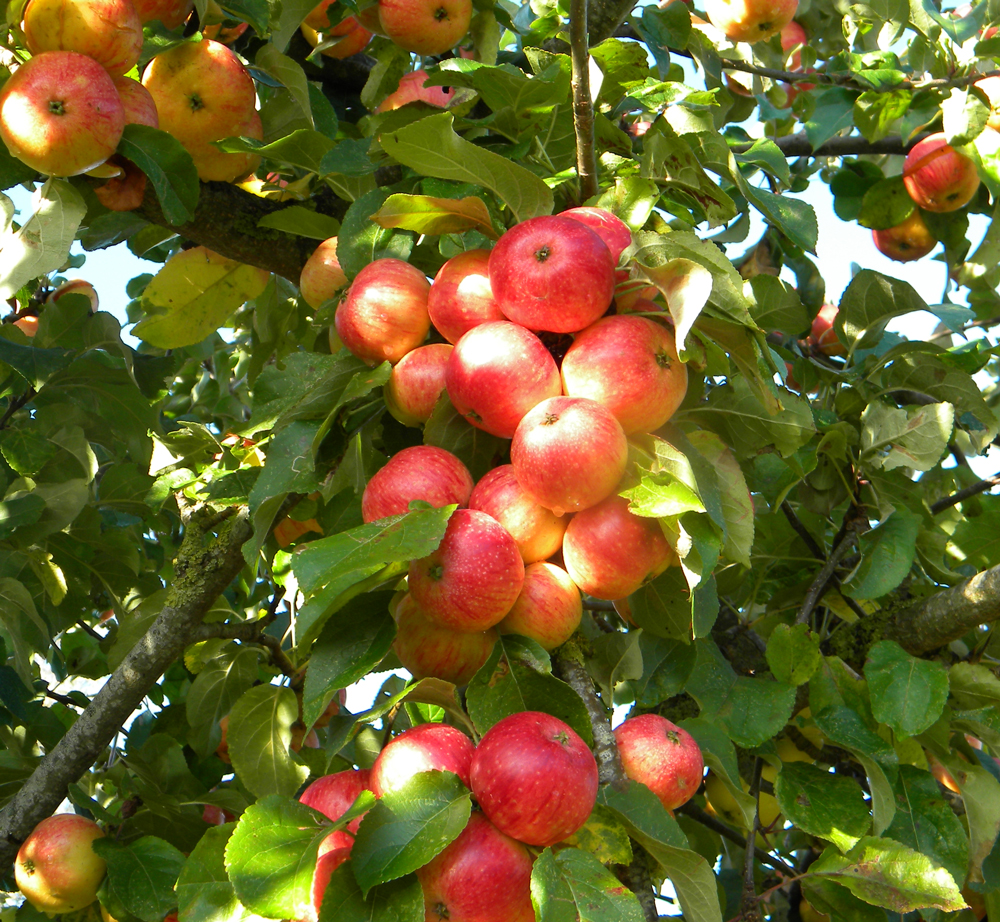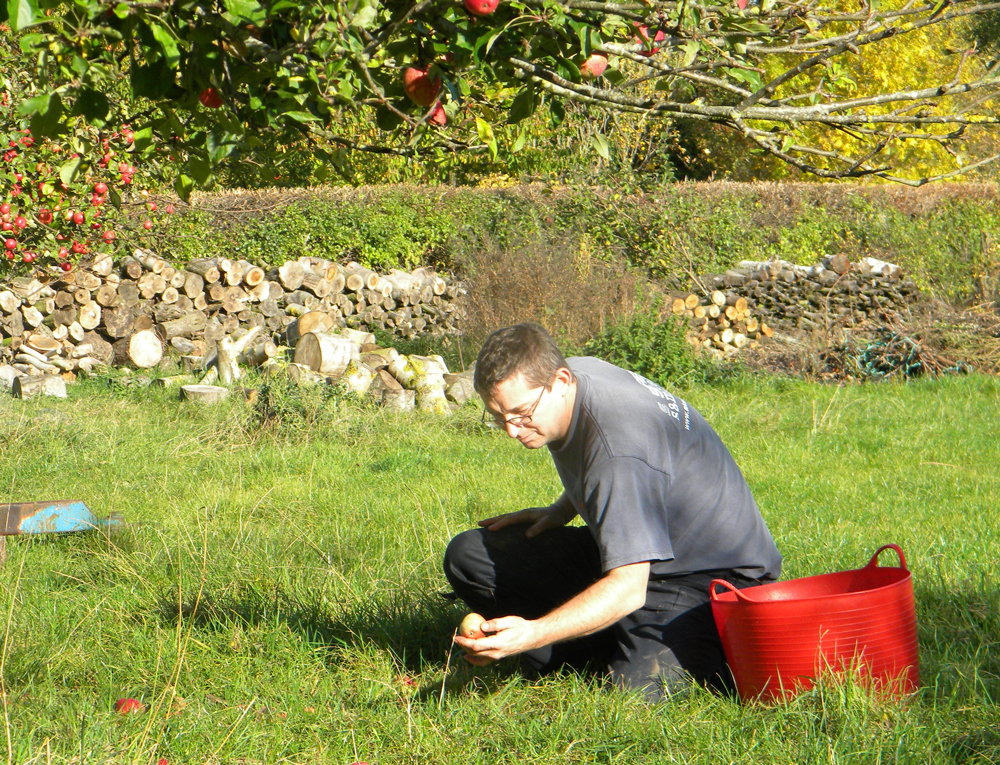As November gets underway, the industrial ‘cider’ makers are starting to run towards the end of their apple supplies for the year – most of the pressing is done and the concentrated juice tucked away for the monthly making cycles of the year ahead. Makers of real cider, however, have only just started the main bulk of their work. This is the prime time for us; the starch in the apples is turning to high levels of sugar, the honeyed aroma of very ripe apple surrounds us – and importantly the temperature will usually start to cool down.
The big boys buy their apples from large-scale fruit growers. These growers understandably want to get their apples off the tree, picked up and delivered as soon as possible to prevent the possibility of rotting and, of course, to get their payment nestling cosily in the bank. That tends to mean the trees are shaken just prior to that particular row being mechanically collected and the apples dispatched for immediate processing at the mill. Often the resulting apples are under-ripe, meaning lower levels of sugar and flavour, and higher levels of starch to mess up the mill’s evaporation equipment.
- A Porter’s Perfection tree on 1st November, its fruit still ripening in the Autumn sunshine.
By contrast, the craft cider community likes to collect its fruit gently and store it until all the starch has turned to sugar, or at the very least wait until the fruit hits the ground naturally. Our aim is to mill and press the fruit at exactly the right moment, when maximum ripeness has occurred, just before the whole thing dries out or turns to a brown slurry that can’t be pressed. That way, you get the minimum level of starch in your juice, a high level of sugar and the full flavours of a super-ripe apple imparted to your cider juice. The majority of the apples we tend to use are only starting to come properly ready to mill around now at the start of November.
I’ve mentioned before on this blog how craft cider makers dislike warm weather. Most of us like to see our fermentations proceeding at a leisurely pace, reputedly resulting in a better-tasting cider, and certainly giving us more opportunity to manage events should they run out of control at this stage. It’s another important reason to hold fire on your pressing for as long as you dare.
So yesterday we were picking up apples from a lovely little house orchard containing young standard trees around 10 years old. And I was reminded again of what we’re striving to achieve at Worley’s Cider. Apples from late mid-season bittersweet fruit such as Harry Masters Jersey and Yarlington Mill were lying happily in the long, cool grass waiting to be collected, alongside the last of earlier sweets and early fallers from those varieties that will mark the end of the season, Dabinett and the deliciously sharp and late Porter’s Perfection.
We could so easily have shaken everything off the branches and gathered it all up, but the apples there will need pressing at three entirely separate times to get the best from them. And varieties such as Dabinett, we know from experience aren’t ready to press yet, even if they are on the floor, and their tough hides mean they’ll happily sit in the grass for a fortnight yet before being picked up. Muddling them all together would mean compromising the quality of the cider, some fruit would end up being pressed too early and some too late. We picked up the fruit most ready to press and will return once or twice more to gather the rest.
It may seem like a lot of work to keep running back and forth to get apples at their best, and hand-picking most of the fruit, but quality in means quality out. And that means you should be enjoying the benefits of that extra attention to detail by early summer next year.



